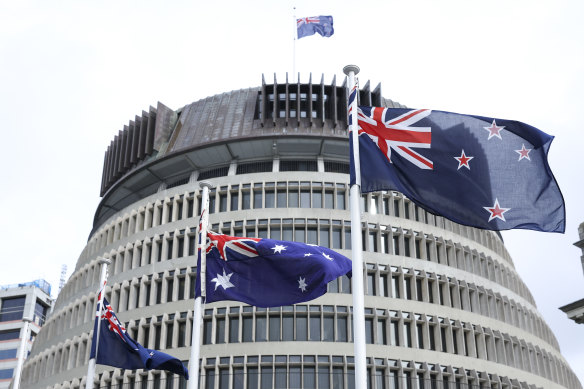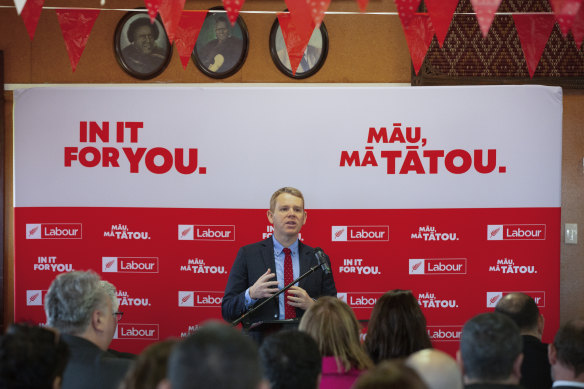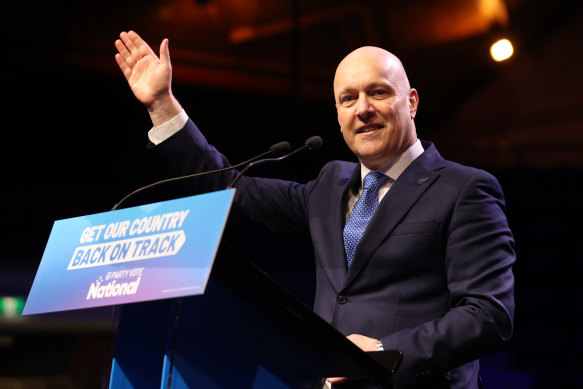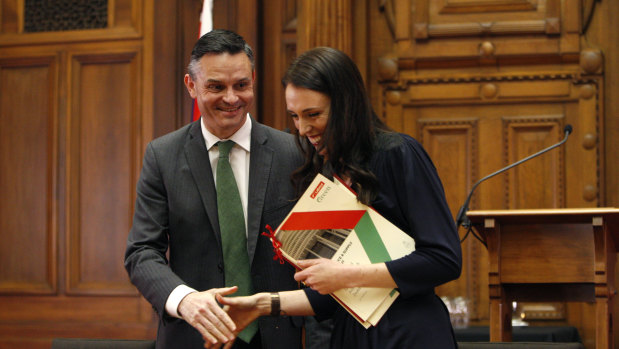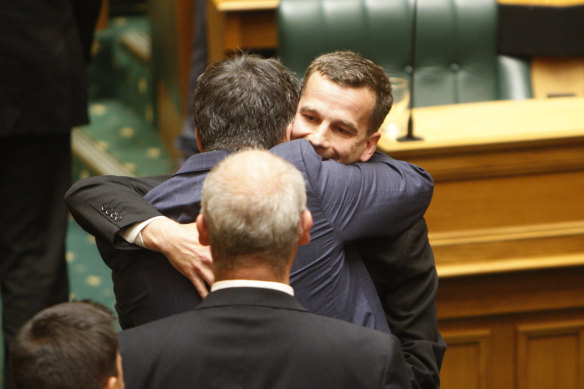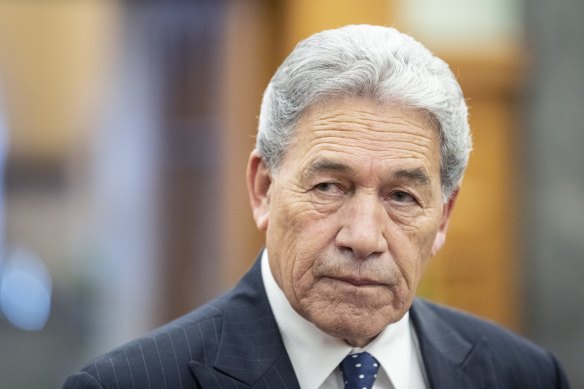A quick guide to the New Zealand election campaign

Save articles for later
Add articles to your saved list and come back to them any time.
Wellington: New Zealanders go to the polls on October 14, when they decide whether to give Labour a third term in office, or flip to a National-led government.
Polling suggests a tight race, with major parties likely to need help from at least one other minor party to form a parliamentary majority.
New Zealand and Australian flags fly in front of the NZ parliament in Wellington.Credit: Getty
Inflation and the cost of living is the central issue, with crime, housing and health also registering highly.
To enter parliament in New Zealand’s mixed member proportional system, parties must either win one of the 72 electorate seats or hit five per cent of the nationwide party vote.
The six parties most likely to contend for parliament fall into two blocs: the left – Labour, the Greens and the Maori Party – and the right – National, ACT, and New Zealand First.
The most recent polls give the right an edge, with National and ACT possibly able to govern without NZ First’s help.
LABOUR
Politics: Centre-left, social democratic.
Leader: Chris Hipkins. The “boy from the Hutt” replaced Jacinda Ardern after her shock resignation in January, stepping up from previous stints as COVID-19 and education minister and parliamentary attack dog. Representing downtrodden northern Wellington, voters have warmed to the down-to-earth “Chippy” but he’s dealt with little other than disaster and scandal since becoming prime minister.
Last election: 50 per cent, 65 seats. Landslide win.
Recent polling: 26-33 per cent.
Big issue: Do voters blame the pandemic, or Labour, for inflation, an economy in recession and growing youth crime?
New Zealand Prime Minister Chris Hipkins speaks at the Labour Maori campaign launch, held at Nga Whare Waatea marae in Auckland last month.Credit: NZHerald/AP
NATIONAL
Politics: Centre-right.
Leader: Chris Luxon. The other Chris is a former Air New Zealand chief executive who was drafted into parliament at the last election and became leader a year later. A political protégé of Sir John Key, the 53-year-old can appear too corporate or wooden, but has brought discipline and focus to the Nats, which boast a policy platform full of ideas.
Last election: 26 per cent, 33 seats. Decimated and depressed in opposition.
Recent polling: 33-37 per cent.
Big issue: Have voters warmed to Luxon enough to make him prime minister?
National Party leader Chris Luxon speaks at the National Party election campaign launch in Auckland on Sunday.Credit: Getty
GREENS
Politics: Left.
Co-leaders: James Shaw and Marama Davidson. Shaw is the corporate, urban Green who has been climate change minister for six years. Davidson is a grassroots campaigner with a rabble-rousing record. Together, the pair have walked the awkward line of holding down ministries while also criticising the Labour government from the left.
Last election: 8 per cent, 10 seats. Signed a co-operation deal with Labour for two ministries outside cabinet.
Recent polling: 8-12 per cent.
Big issue: The Greens are campaigning on major tax reform to fund universal dental care and poverty eradication.
New Zealand Green Party leader James Shaw, left, and Prime Minister-designate Jacinda Ardern shake hands after signing a confidence and supply agreement in 2017.Credit: AP
ACT
Politics: Libertarian, right-wing.
Leader: David Seymour. No other NZ politician can slip as effortlessly from a serious policy discussion to an attention-grabbing stunt. With National in the wilderness over the past six years, the 40-year-old has grown his party’s support with conservative policies like shrinking the public sector, lowering tax and red tape, tougher sentencing and a referendum on the Treaty of Waitangi.
Last election: 8 per cent, 10 seats. Surged in size but remained in opposition.
Recent polling: 10-14 per cent.
Big issue: Well poised to support National in government if the right takes power. Can it hold the vote from National through the campaign?
Euthanasia bill sponsor David Seymour, rear right, embraces other MPs in parliament in Wellington after passage of the bills in 2019.Credit: AP
MAORI PARTY (TE PATI MAORI)
Politics: Indigenous rights, left.
Co-leaders: Debbie Ngarewa-Packer and Rawiri Waititi. Disruptive and radical, the Maori Party co-leaders became MPs in 2020 and have left their mark by refusing to adapt to the colonial institution of parliament. The “unapologetically Maori” pair have shifted the party leftwards from a previous incarnation that supported Key’s government.
Last election: 1 per cent, two seats. Re-entered parliament through Waititi’s surprise win in the Waiariki electorate and sat in opposition.
Recent polling: 3-6 per cent.
Big issue: The party has polled as high as seven per cent but its fate is likely to depend on Maori seats. How strong is their grassroots game?
Rawiri Waititi walks the runway during the Kiri Nathan show during New Zealand Fashion Week 23 in AUckland last week.Credit: Getty
NEW ZEALAND FIRST
Politics: Populist
Leader: Winston Peters. First elected in 1979 and founded NZ First in 1993. A perennial kingmaker, this time around Peters has ruled out Labour in the hope of riding a wave of dissatisfaction back into parliament. The party is promising regional investment and has added slices of anti-vax and anti-trans sentiment to its manifesto.
Winston Peters was deputy prime minister of New Zealand and minister for foreign affairs. He lost his seat at the last election.Credit: Getty Images
Last election: 2.5 per cent, 0 seats. Left parliament after a shocking result.
Recent polling: 3-6 per cent.
Big issue: Will Winston court enough controversy to shake loose enough disaffected voters to make the minimum required to return to parliament?
AAP
Most Viewed in World
From our partners
Source: Read Full Article
